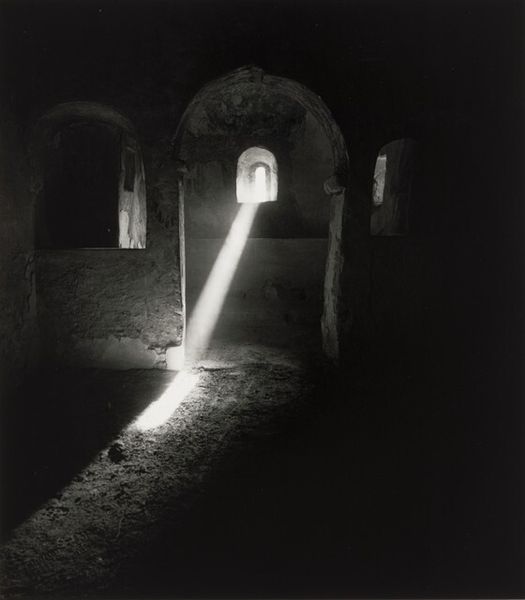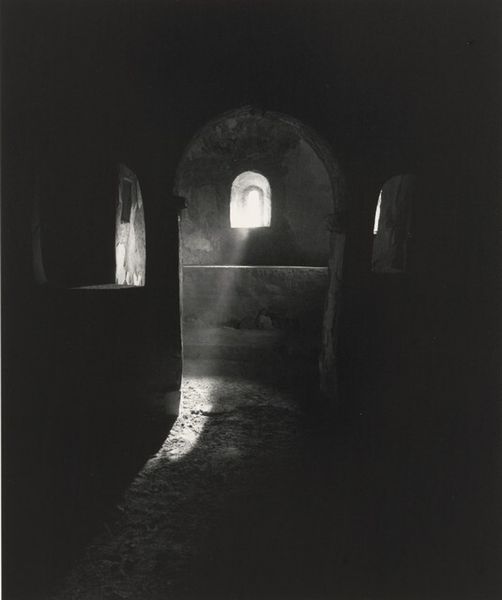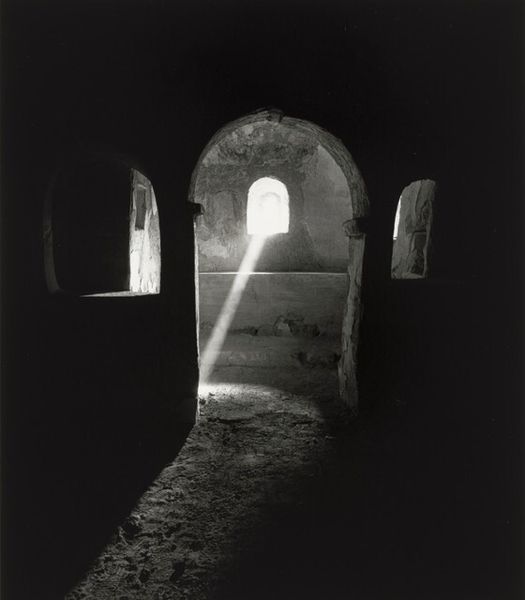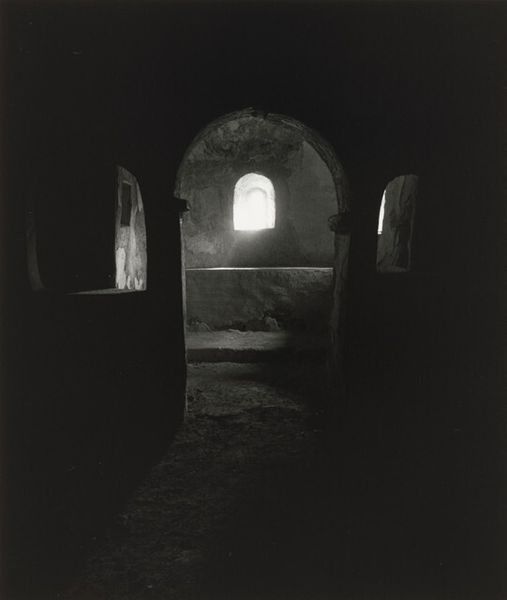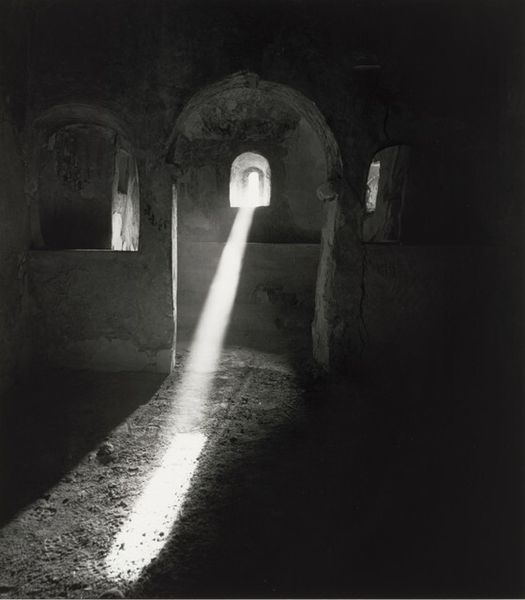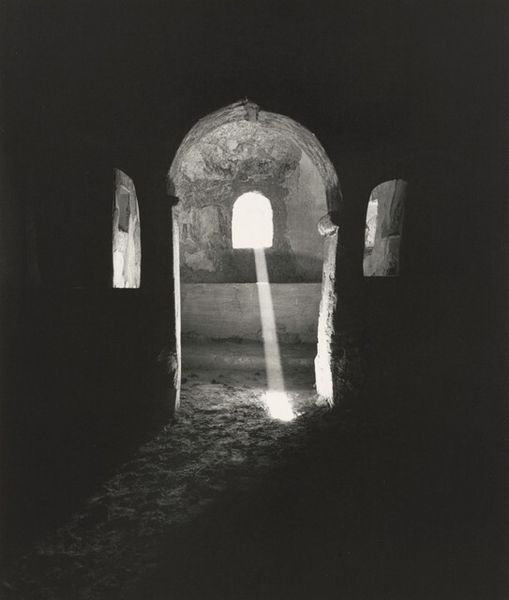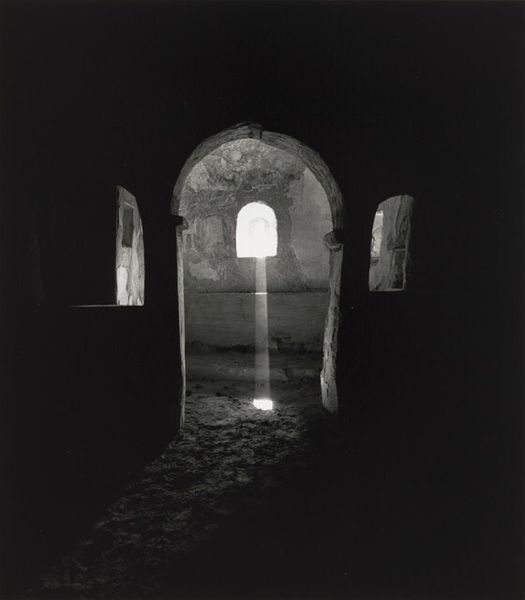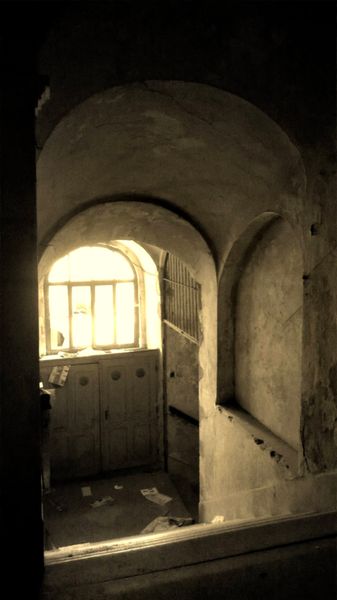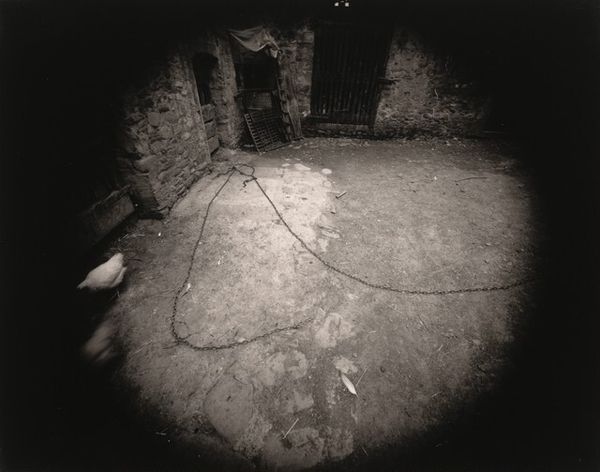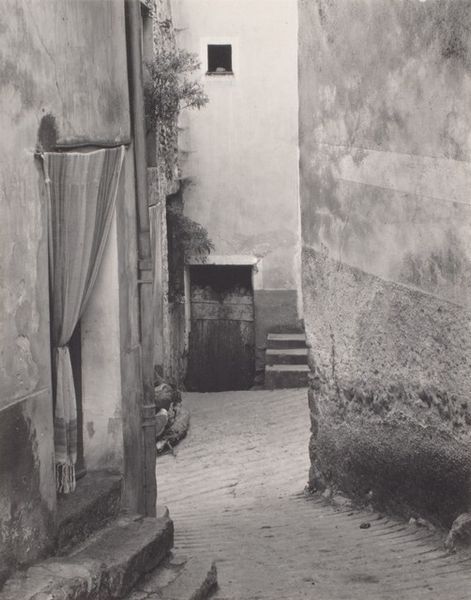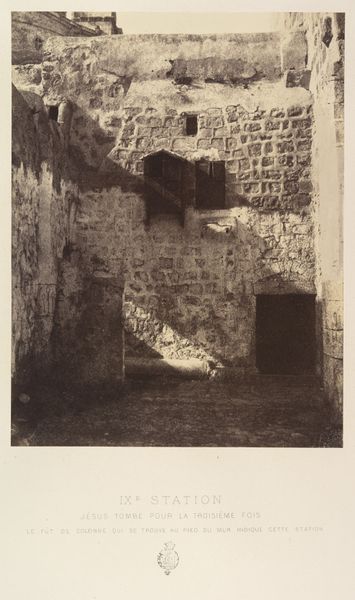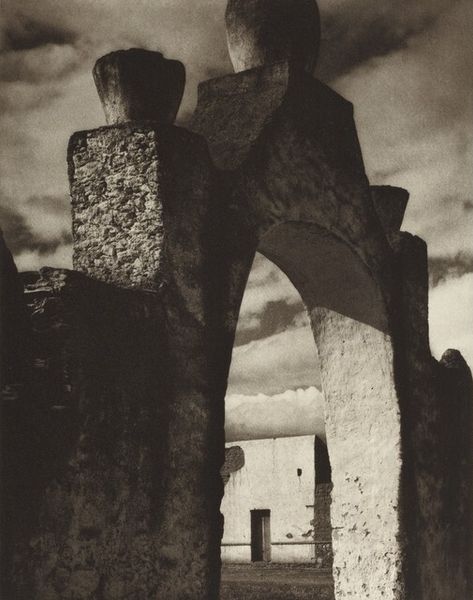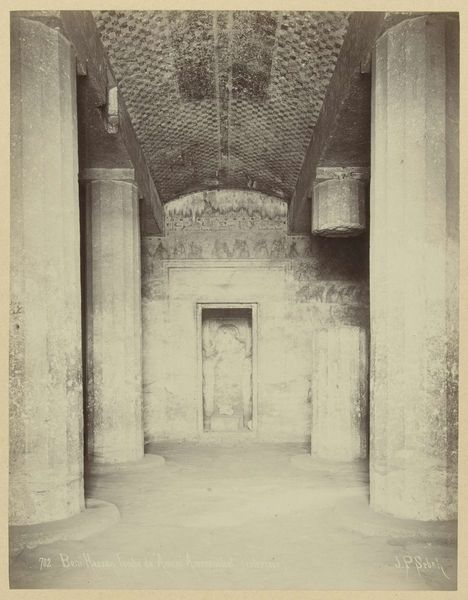
Esteban de Viguera, June 11, 1991, 9:30 - 11:30 a.m. 1991
0:00
0:00
Dimensions: image: 27.94 × 24.5 cm (11 × 9 5/8 in.) sheet: 40.25 × 30.75 cm (15 7/8 × 12 1/8 in.)
Copyright: National Gallery of Art: CC0 1.0
Ursula Schulz-Dornburg captured this image of Esteban de Viguera on June 11, 1991. The Romanesque arch motif dominates the architectural space. The arches are like those found in ancient catacombs, evoking themes of burial and rebirth. Note the stream of light penetrating the darkness through the central arch, a symbol of divine illumination. This recalls the cave in Plato's allegory, where enlightenment dawns upon those who emerge from darkness. The use of light as a symbol is echoed throughout art history. Think of Caravaggio's dramatic chiaroscuro, where divine light pierces the darkness, or the Renaissance paintings with light representing spiritual awakening. The arch itself, a universal motif, appears in triumphal arches, doorways, and windows across cultures. From the Arch of Constantine to Gothic cathedrals, the arch transcends its function to become a symbol of passage and transformation. It stirs something deep in our collective memory, a subconscious recognition of sacred spaces and transformative journeys. The emotional power lies in the contrast between darkness and the beckoning light, prompting reflection on mortality, hope, and the cyclical nature of existence.
Comments
No comments
Be the first to comment and join the conversation on the ultimate creative platform.
